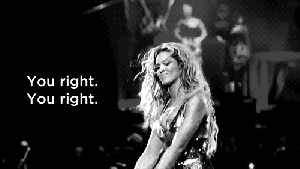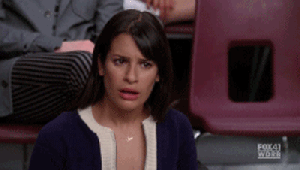I was driving home with my mom one day, super excited about the fact that I’d finally settled on a topic for my thesis. So I blurted out that I, Bashiera Parker, would dedicate a year of my life to discussing what it means and how important it is to be a feminist.
“Hold up,” my mom said, as she hit the brakes. “Bashiera, you can’t be a feminist and a Muslim. That’s wack and downright wrong, baby girl.”
This probably isn’t exactly what happened – the dialogue could be a bit off – but in my head, this is close to how things went down. I mean, my whole world came crashing down, so the drama of it all is real, because for the past few years I’ve been tweeting about how I’m a feminist and starting arguments with every second person that didn’t see the value in being one or trying to tear someone down who actually was.
So can I be a Muslim and a feminist?
Well, as we did with feminism, let’s start by looking at issues of representation or rather, misrepresentation, when it comes to Islam and being a Muslim.
We all know that being a Muslim in Trump’s America right now is life-threatening. Heck, being a Muslim anywhere in the world right now is risky. And largely due to the fact that most people have already made up their minds about what it means to be a Muslim, or have had their minds made up for them by the media. Edward Said explains that within the Western media, Muslims are only ever represented on terms which suit the West. He therefore says, of his own experiences living in the Western world as an Arab Palestinian:
“The life of an Arab Palestinian in the West, particularly in America, is disheartening. There exists here an almost unanimous consensus that politically he does not exist, and when it is allowed that he does, it is either as a nuisance or as an Oriental.”
To put it bluntly in terms we’ve all tragically come to understand, when it is allowed that we do get to exist, it is either as some “exotic” being, as he suggests, or, a terrorist.
The women of Islam have also been branded by the Western world, but for the most part as the “oppressed”. As a result, the traditional headscarf that a lot of Muslim women wear as a sign of their piety and modesty has even been banned in some parts of the world. And while some, as in the case of political movement Femen, have endorsed the removal of the headscarf to “liberate” women who are ‘forced’ to wear hijab, I’d like to at this point make my first point in the direction of establishing some sort of feminist stance for Muslim women:
Surely, if women are being forced to cover up in certain parts of the world (and I don’t deny that that is actually happening), then surely someone forcing them to remove their headscarf, burkini or turban is equally as oppressive.
Surely you realize the irony in this situation?
There are, however, women who are so unapologetically themselves while rocking their hijab who seem pretty liberated to me. People like fashion blogger, Dina Tokia, for example, or my friend and local blogger, Areeba Baker, who happens to be in a scarf, that she decided to start wearing and even shows people how to drape in cool and exciting ways in tutorials she films for her page. She’s also created her own scent and has a driver’s liscense – imagine that.
Sarcasm aside, my point is that there are actually women who, despite the stereotype that Muslim women are submissive and oppressed, actually live their own lives by their own rules, with authority over their bodies, independent of any Western or patriarchal power.
What are some Muslim scholars’ responses to the idea of being a feminist Muslim?
Well, from my research, I found that the Quran both supports and denies the notion that one can be both a feminist and a Muslim. But before you say “I told you so”, stop and read, because it’s not quite as simple as you may think.
Let’s begin by discussing Khadijah, the wife of the prophet (SAW).
Khadijah is said to have been born around 555 C.E and was known in full as Khadijah bint Khuwaylid, as she was the daughter of a successful merchant who traded in the Quraysh tribe. When her father passed on, Khadijah took over his business and became known as “Ameerat-quraysh” – Princess of Quraysh – and “al-Tahira” – The Pure One – for her reputation as a business-savvy woman who was a devoted Muslim and compassionate soul, as she gave much of her earnings to the less fortunate.
And this was all in a patriarchal society, one that I suspect was far more rigid than today’s.
Anyway, Khadijah was such a good woman that she was asked for her hand in marriage many a time, and turned down many proposals. She did marry twice though, before she met the prophet Muhammad.
Khadijah didn’t need financial support though, but upon hearing about the remarkable character of the prophet, she employed him and after, fell in love, proposed and married him.
Khadijah became the wife of the prophet as well as his adviser and greatest confidant. Prophet Muhammad said that Khadijah, a woman who was independent and yet, possessed the qualities of a devoted and compassionate Muslim, was one of four of the greatest women that we will ever know.
Khadijah bint Khuwaylid is therefore the very first and possibly the best example I can give you of how you can, in fact, be a Muslim and a feminist, all the while being considered one of the greatest women of all time by the prophet of Islam.
Further into my research, however, I felt slightly more conflicted and thought, I not only couldn’t be a feminist and a Muslim but I actually didn’t want to.
Bear with me here.
See, when Amina Wadud made the courageous and monumental step for women in Islam by leading the first ever female-led Jumuah prayer, the Muslim world was up in arms and horrified at this gross violation and disrespect for the deen, while others were shook by those who were horrified and couldn’t understand why they wouldn’t be overjoyed at the fact that finally, women were getting the same recognition as men and the equality that they rightfully deserved.
Yasmin Mogahed, however, wrote the most beautiful response asking why on earth women would want such a thing. Why would we want to be equal to man?
Mogahed explained that after years of fighting, Western feminists have established some sort of standard for themselves in relation to man. We assumed that, because a man could do something or because he did something, it was somehow better, despite the fact that for years before, men have led prayer and it hasn’t really pained the majority of us. But now, after years, because a man leads prayer, we assume that that makes him better and so we also want to be better. But Mogahed explains, man is not the standard, God is. And God has given women things that men will never have – thing that do make us, for lack of a better word and for the sake of this argument, better.
“On the other hand, only a woman can be a mother. And God has given special privilege to a mother. The Prophet ﷺ taught us that heaven lies at the feet of mothers. But no matter what a man does he can never be a mother. So why is that not unfair?
When asked, “Who is most deserving of our kind treatment?” the Prophet ﷺ replied, “Your mother” three times before saying “your father” only once. Is that sexist? No matter what a man does he will never be able to have the status of a mother.
And yet, even when God honors us with something uniquely feminine, we are too busy trying to find our worth in reference to men to value it—or even notice. We, too, have accepted men as the standard; so anything uniquely feminine is, by definition, inferior. Being sensitive is an insult, becoming a mother—a degradation. In the battle between stoic rationality (considered masculine) and selfless compassion (considered feminine), rationality reigns supreme.”
In Mogahed’s explanation she says that we cannot be equal to me, because God has made us so different to begin with. But such difference should not be considered an injustice because while God has given men something that we do not possess, he has similarly given women that which men do not and will not ever have.
Considering both these arguments, I can’t help but question my position as a Muslim feminist. But if I consider my initial argument of believing men and women should be equal and giving women the agency to be who they want to be in a constantly changing world that seems to still fit particular standards set by men, then yeah, I’m pretty sure I can be a Muslim feminist. Sure, there are things that I cannot do and I don’t want to do because my deen comes before anything else, and I quite frankly would not like to lead prayer because leading will make me no better than praying behind someone, but I’m pretty happy with what I can do too. I have a voice, a laptop and an interent connection, which means I have the ability to do what I love and write about things that matter, all the while being a Muslim and a woman, mind you.
And if there’s one thing I’m sure of, it’s that I am proud to be a woman in Islam. So to conclude, and in the words of Yasmin Mogahed:
“Given my privilege as a woman, I only degrade myself by trying to be something I’m not – and in all honesty – don’t want to be: a man. As women, we will never reach true liberation until we stop trying to mimic men, and value the beauty in our own God-given distinctiveness.
If given a choice between stoic justice and compassion, I choose compassion. And if given a choice between worldly leadership and heaven at my feet—I choose heaven.”
Read more:
- Blackburn, Y. (2015). 7 Remarkable Things About Khadijah, Wife of the Prophet of Islam. [Online] 21 April. Available from: http://www.huffingtonpost.com/yasmina-blackburn/7-remarkable-things-about_b_7097606.html. [2017, September 13]
- Mogahed, Y. (2005). A Woman’s Reflection On Leading Prayer. [Online]. Available from: http://www.yasminmogahed.com/2010/12/19/a-woman’s-reflection-on-leading-prayer/. [2017, September 13]
- Said, E. (1978). Orientalism. London: Routledge & Kegan Paul Ltd.











